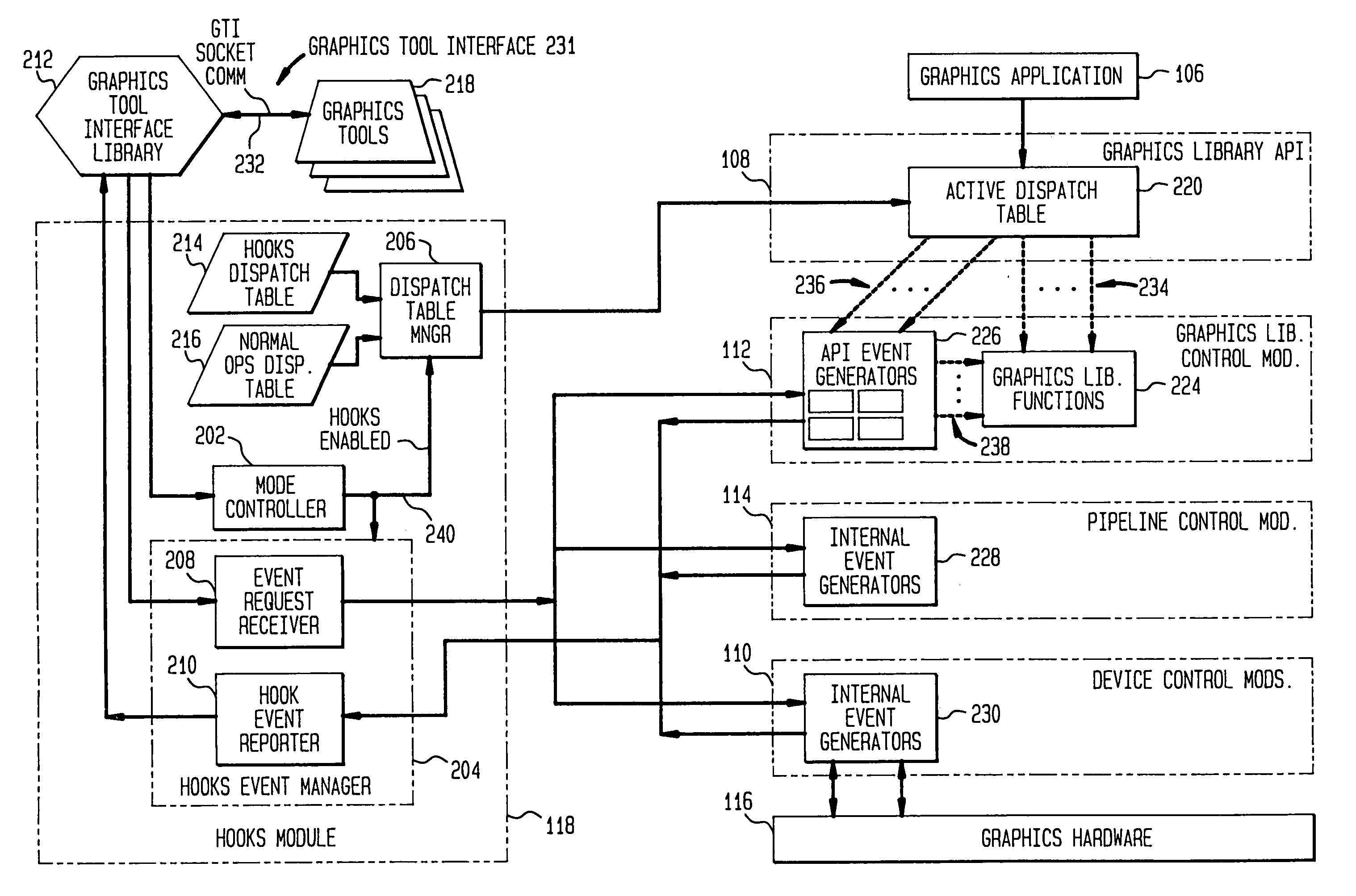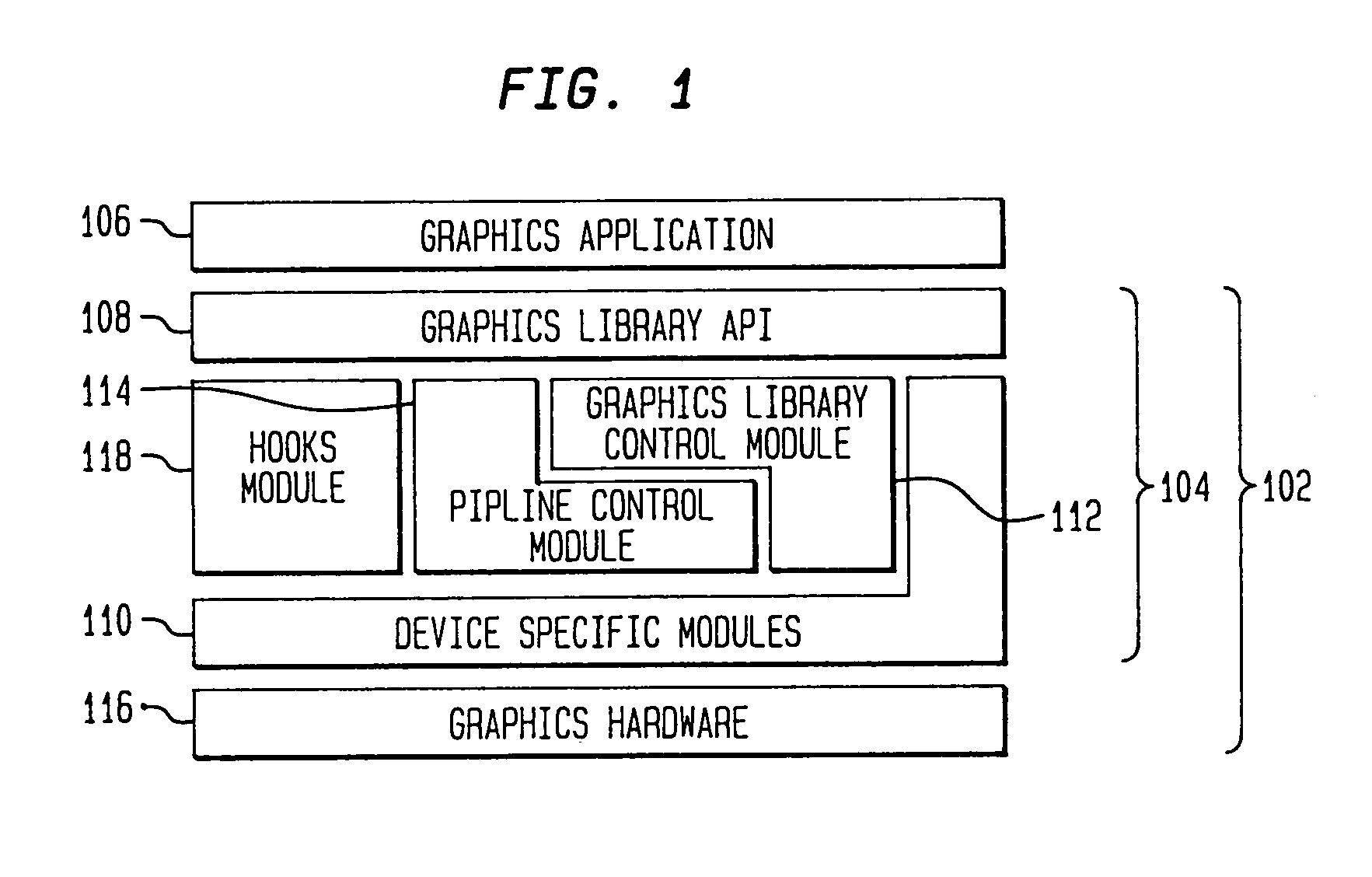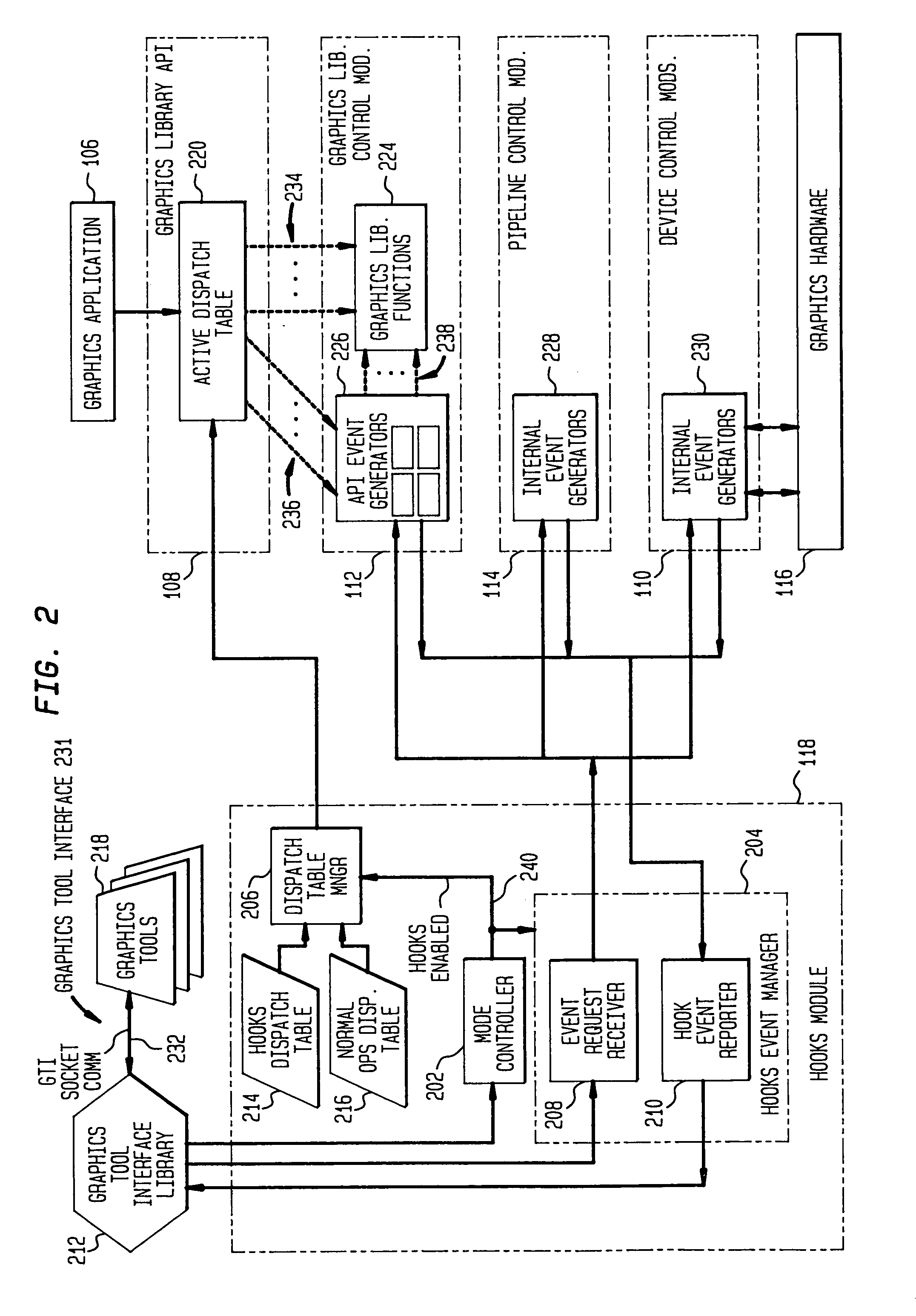Accessing a graphics system for graphics application evaluation and control
a graphics system and graphics application technology, applied in the field of computer graphics systems, can solve the problems of time-consuming, inefficient, limited diagnostic capabilities, and difficult use of conventional systems and techniques for performing such evaluation and control functions, and achieve the effects of less performance penalties, more information, and more information and control
- Summary
- Abstract
- Description
- Claims
- Application Information
AI Technical Summary
Benefits of technology
Problems solved by technology
Method used
Image
Examples
Embodiment Construction
[0046]FIG. 1 is an architectural block diagram of an exemplary computer graphics system 102 suitable for incorporation of the hooks module system of the present invention. As shown, the system 102 provides a well-known computer platform on which software applications such as graphics application 106 are executed. The system 102 communicates with and is responsive to the graphics application 106. The computer graphics system 102 includes a graphics library 104 through which the graphics application 106 controls graphics hardware 116 of the graphics system 102.
[0047]The graphics library 104 provides an application program interface (API) 108 of function calls through which the graphics application 106 communicates with the graphics library 104. The graphics library API 108 enables the graphics application 106 to efficiently control the graphics system 102. The graphics library API 108 is preferably a streamlined, hardware-independent interface designed to be implemented on many differ...
PUM
 Login to View More
Login to View More Abstract
Description
Claims
Application Information
 Login to View More
Login to View More - R&D
- Intellectual Property
- Life Sciences
- Materials
- Tech Scout
- Unparalleled Data Quality
- Higher Quality Content
- 60% Fewer Hallucinations
Browse by: Latest US Patents, China's latest patents, Technical Efficacy Thesaurus, Application Domain, Technology Topic, Popular Technical Reports.
© 2025 PatSnap. All rights reserved.Legal|Privacy policy|Modern Slavery Act Transparency Statement|Sitemap|About US| Contact US: help@patsnap.com



